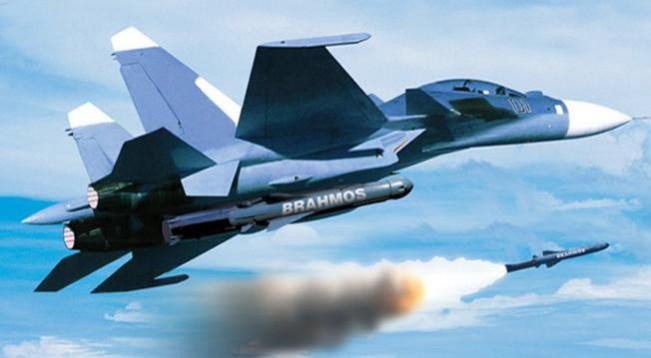
A slew of Indian nuclear-capable missile tests has triggered speculation about the geostrategic message that the country is sending its neighbours. India's Strategic Forces Command (SFC) successfully conducted the night flight test of nuclear-tipped Intermediate Range Ballistic Missile (IRBM) Agni-II with 2,000km range on Saturday. It was touted to be user trials in collaboration with the Defence Research and Development Organisation (DRDO). But media reports say the two-state solid-fuel missile used improved navigation system that could reduce targeting errors.
Message to China
The DRDO is set to soon test its mysterious underwater launch capability of K-5 missile that is thought to have a range of 3,500 km. The submarine-launched ballistic missile (SLBM) would complete the country's nuclear triad. It means India would be acquiring the capability of nuclear strikes from the land, air and the sea, becoming only the fifth member of the nuclear triad club. The others are the US, Russia, China and Israel.
India plans to keep ready at least two squadrons of Su-30MKIs fitted with BrahMos
The completion of the triad will be a bold message mainly to China, the powerful northern rival. Tensions with Pakistan on the west have been reigning high since Prime Minister Narendra Modi abrogated Article 370 of the Constitution removing Jammu and Kashmir's special status and the change of status to two union territories including Ladakh that came into being on October 31. But the completion of the triad is a fiery message to China, which has been needling India in Ladakh and Dokhlam sector in Arunachal Pradesh.

India's Agni series rockets are nuclear-capable and are land-based, mobile-launched ballistic missile deterrents that can strike any corner of Pakistan and most of China. India has inducted Prithvi-1 and Agni-I to 5 with the SFC. Prithvi-1 can hit targets of up to 600km away and Agni-I up to 700km away with nuclear warheads. Agni-II that was tested for its nigh flight capabilities on Sunday night was monitored through its entire 2,000km flight, according to reports. Agni-III has 3,00km range and Agni-4 can take out targets 3,500km away.
Though Agni-V, which is also operational, is claimed to have 5,500km range, it is rumoured that it can actually fly farther. The Indian defence authorities are keeping information about the real range under the wraps to avoid international scrutiny. Agni-VI will be the real gamechanger for the country with the capability of hitting targets beyond 8,000km, which means it will be rated as a true ICBM. Moreover, the missile reportedly has MIRV (multiple independently targetable re-entry vehicle) capabilities, which take India into a rare league of military powers. India is keeping its test schedule secret.
Radars and telemetry stations
The air-leg of the triad is the supersonic BrahMos missiles, which have been successfully tested on Sukhoi-30MKI (Su-30MKI) air-superiority fighter planes. India plans to keep ready at least two squadrons of Su-30MKIs fitted with BrahMos, according to reports. These are cruise missiles that can travel at Mach-3 (about thrice the speed of sound) at hit targets 300km away. BrahMos Aerospace, the Indo-Russian joint venture, is in the process of developing a hypersonic variant of the missile that could travel at more than Mach-5.
The 20-metre-long two-stage Agni-II that was tested on Saturday has a launch weight of 17 tonnes and can carry a 1,000 kg payload over 2,000km. A battery of sophisticated radars, telemetry observation stations, electro-optic instruments and two naval ships located near the impact point in the downrange area of Bay of Bengal tracked the missile through its entire flight, DRDO sources said.














